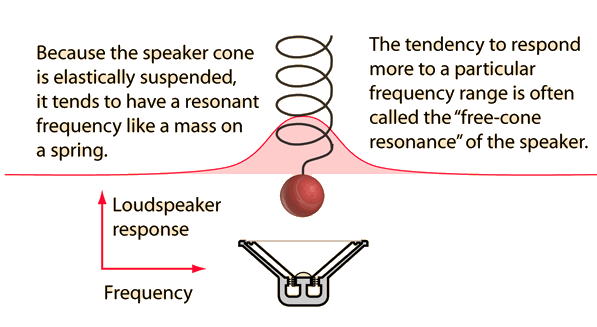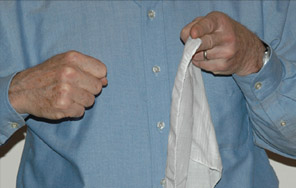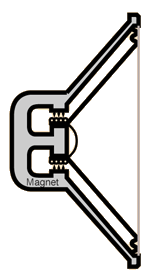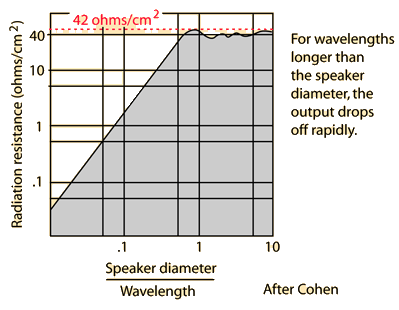Back-to-Front Cancelation
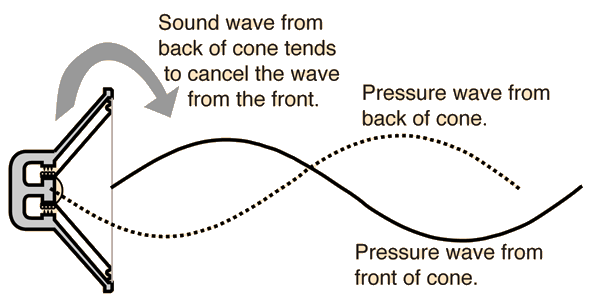
While the front surface of the cone of a loudspeaker is pushing forward to create a sound wave by increasing air pressure, the back surface of the cone is lowering the air pressure. Since the wavelengths of low frequency sound are large compared to the size of the speaker, and since those low frequencies readily diffract around the speaker cone, the sound wave from the back of the cone will tend to cancel that from the front of the cone. For most bass frequencies, the wavelength is so much longer than the speaker diameter that the phase difference approaches 180°, so there is severe loss of bass from this back-to-front cancelation.
This is one of the reasons why even the best cone-type loudspeaker must have an enclosure to produce good sound.
| Loudspeaker basics |
Sound reproduction concepts
Loudspeaker concepts
| HyperPhysics***** Sound | R Nave |
